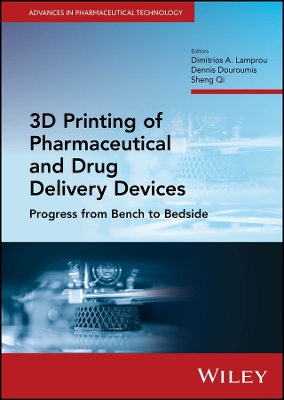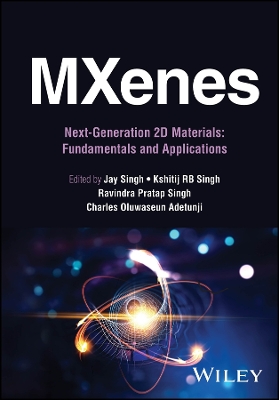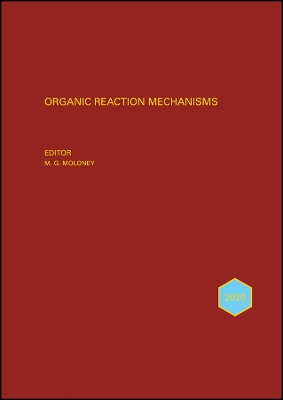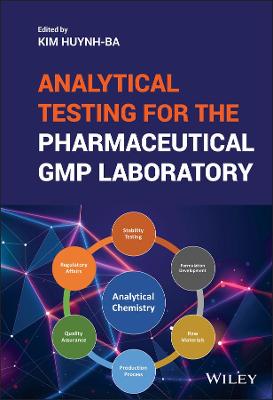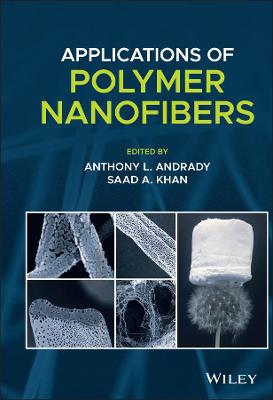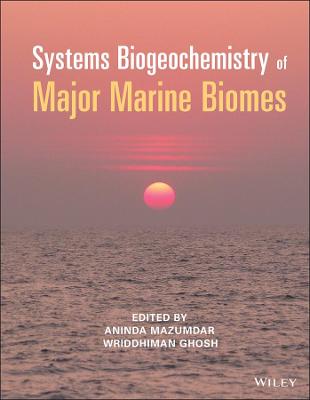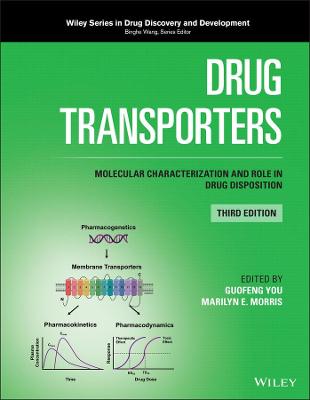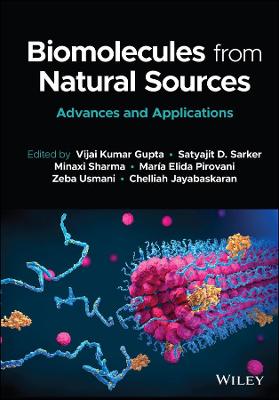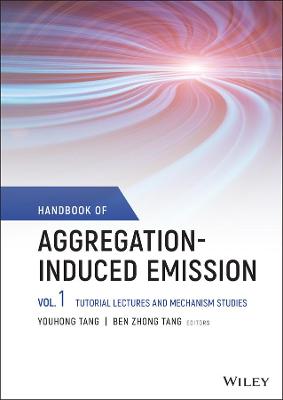Flexible Thermoelectric Polymers and Systems
 -15%
portes grátis
-15%
portes grátis
Flexible Thermoelectric Polymers and Systems
Ouyang, Jianyong
John Wiley & Sons Inc
02/2022
272
Dura
Inglês
9781119550709
15 a 20 dias
516
Preface xiii
1 Fundamental Knowledge on Thermoelectric Materials 1
Jianyong Ouyang and Hanlin Cheng
1.1 Properties of Thermoelectric Materials 1
1.1.1 Thermoelectric Effect 3
1.1.2 Seebeck Effect 3
1.1.3 Peltier Effect 11
1.1.4 Thomson Effect 11
1.1.5 Electrical Conductivity 12
1.1.5.1 Charge Carrier Density 12
1.1.5.2 Charge Carrier Mobility 15
1.1.5.3 Temperature Dependence of Conductivity 17
1.1.5.4 Conductivity of Composites 20
1.1.6 Thermal Conductivity 22
1.2 Thermoelectric Generators 24
1.2.1 Dependence of Thermoelectric Efficiency on ZT 24
1.2.2 Effect of Electrical and Thermal Contact Resistances On Thermoelectric Performance 25
1.2.3 Equation of Thermoelectric Efficiency 27
1.3 Peltier Cooling 35
1.4 Thermoelectric Sensors 37
1.5 Summary 37
Acknowledgment 38
References 38
2 Conductive Polymers for Flexible Thermoelectric Systems 41
Lin Hu, Zaifang Li, Yinhua Zhou, and Fengling Zhang
2.1 Introduction 41
2.1.1 The Discovery and Development of Conductive Polymers 42
2.1.2 Representative Structures 43
2.1.2.1 Polyacetylene (PAc) 44
2.1.2.2 Polyaniline (PAni) 44
2.1.2.3 Polypyrrole (PPy) 45
2.1.2.4 Polythiophene (PTh) and Derivatives 46
2.1.3 Conductive Mechanism 47
2.2 Chemical Design and Synthesis of Conductive Polymers 48
2.2.1 Energy Level Design of Conjugated Polymers 48
2.2.2 Tuning Molecular Conformations 51
2.2.3 Melt and Solution Processability 51
2.3 Doping of Conductive Polymers 52
2.3.1 n-Type Doping 54
2.3.2 p-Type Doping 55
2.4 The Properties of Poly(3,4-ethylenedioxythiophene) 57
2.4.1 Oxidative and in situ Polymerization of EDOT to PEDOT 57
2.4.2 Counterions for PEDOT 58
2.4.3 PEDOT:PSS 59
2.4.4 Applications in Organic Electronics 62
2.4.4.1 As an Electrode in Organic Solar Cells 62
2.4.4.2 Buffer Layer in Organic Solar Cells 64
2.4.4.3 Polymer-Based Organic Thermoelectric Generators 64
2.5 Processing Technics for Flexible Thermoelectric Generators 65
2.6 Conclusions and Perspectives 69
Acknowledgments 69
References 70
3 Flexible Thermoelectrics Based on Poly(3,4-Ethylenedioxythiophene) 81
Ming Hui Chua, Ady Suwardi, and Jianwei Xu
3.1 Introduction 81
3.2 TE Materials and Devices 83
3.2.1 Fundamental Principles and Theory of Thermoelectrics 83
3.2.2 PEDOT and Its Composites as TE Materials 85
3.2.3 General Configuration of TE Devices and Generators 88
3.2.4 Parameters of TE Device and Generator Performances 90
3.2.4.1 Output Voltage 90
3.2.4.2 Output Power Density 91
3.3 PEDOT-Based Flexible TE Materials 92
3.4 PEDOT: PSS-Based TEGs 99
3.5 Conclusions and Perspectives 110
Acknowledgments 111
Conflict of Interests 112
References 112
4 Flexible Thermoelectric Plastic Via Electrochemistry 117
Fengxing Jiang, Peipei Liu, Baoyang Lu, Congcong Liu, and Jingkun Xu
4.1 Introduction 117
4.2 Electrochemical Deposition of CPs 118
4.3 Electronic Structure and Optical Properties 125
4.4 Electrochemical Doping and De-doping 130
4.5 Thermoelectric Performance of Flexible CP Films 133
4.5.1 Polythiophenes 133
4.5.2 Polyselenophenes 135
4.5.3 Polycarbazolyls 136
4.5.4 Copolymers 137
4.6 Control in Thermoelectric Performance by Electrochemistry 138
4.7 Conclusions 140
Acknowledgments 142
References 142
5 Thermoelectric Properties of Conducting Polymers with Ionic Conductors 145
Zeng Fan, Jianyong Ouyang, and Lujun Pan
5.1 Introduction 145
5.2 Mixed Ionic-Electronic Conductors 146
5.3 Ionic Conductor/Conducting Polymer Heterostructures 150
5.4 High-Performance Ion-Conducting TE Polymers 154
5.5 Applications of Electronic-Ionic Coupled TE Organics 158
5.5.1 TE Generators 158
5.5.2 Ionic TE Capacitors 159
5.5.3 Multifunctional Sensors 160
5.6 Summary 161
Acknowledgments 161
References 161
6 Thermoelectric Properties of Carbon Nanomaterials/Polymer Composites 163
Yue Shu, Zhenghong Xiong, Yang Liu, Yongli Zhou, Meng Li, Yujie Zheng, Shanshan Chen, and Kuan Sun
6.1 Introduction 163
6.2 Conducting Polymers 164
6.2.1 PEDOT:PSS 165
6.2.1.1 CNT/PEDOT:PSS 165
6.2.1.2 Graphene/PEDOT:PSS 171
6.2.2 Polyaniline (PANI) 173
6.2.2.1 Powder Mixing Method 174
6.2.2.2 Solution Mixing Method 178
6.2.2.3 In Situ Polymerization Method 180
6.2.2.4 Layer-by-Layer (LBL) Deposition 184
6.2.3 Polypyrrole (PPy) 184
6.2.4 Other P-Type Conducting Polymers 186
6.2.5 N-Type TE Composites 187
6.3 Non-Conducting Polymers 188
6.3.1 Wrap 190
6.3.2 Layer-by-Layer Deposition 191
6.3.3 Segregated Network 193
6.4 Ternary Thermoelectric Material 194
6.4.1 Non-conducting Polymer 194
6.4.2 Conducting Polymer 195
6.5 Summary and Outlook 198
References 199
7 Low-dimensional Thermoelectric Materials 209
Xinyi Chen, Yuanyuan Zheng, Xue Han, Yuanyuan Jing, Minzhi Du, Chunhong Lu, and Kun Zhang
7.1 Introduction 209
7.2 Zero-Dimensional (0D) Inorganic Semiconducting Nanocrystals 209
7.2.1 Measurements 210
7.2.2 Materials and Properties 211
7.2.2.1 Fullerene 211
7.2.2.2 Graphene Quantum Dots 213
7.3 One-Dimensional (1D) Thermoelectric Materials 214
7.3.1 1D Organic Thermoelectric Materials 214
7.3.1.1 Poly(3,4-Ethylenedioxythiophene) anowires 214
7.3.1.2 Other Polymer Nanowires 217
7.3.2 Carbon Nanotubes 219
7.4 Two-Dimensional (2D) Thermoelectric Materials 222
7.4.1 Graphene 223
7.4.2 Black Phosphorus 226
7.4.3 Mxenes 229
References 233
Index 239
Preface xiii
1 Fundamental Knowledge on Thermoelectric Materials 1
Jianyong Ouyang and Hanlin Cheng
1.1 Properties of Thermoelectric Materials 1
1.1.1 Thermoelectric Effect 3
1.1.2 Seebeck Effect 3
1.1.3 Peltier Effect 11
1.1.4 Thomson Effect 11
1.1.5 Electrical Conductivity 12
1.1.5.1 Charge Carrier Density 12
1.1.5.2 Charge Carrier Mobility 15
1.1.5.3 Temperature Dependence of Conductivity 17
1.1.5.4 Conductivity of Composites 20
1.1.6 Thermal Conductivity 22
1.2 Thermoelectric Generators 24
1.2.1 Dependence of Thermoelectric Efficiency on ZT 24
1.2.2 Effect of Electrical and Thermal Contact Resistances On Thermoelectric Performance 25
1.2.3 Equation of Thermoelectric Efficiency 27
1.3 Peltier Cooling 35
1.4 Thermoelectric Sensors 37
1.5 Summary 37
Acknowledgment 38
References 38
2 Conductive Polymers for Flexible Thermoelectric Systems 41
Lin Hu, Zaifang Li, Yinhua Zhou, and Fengling Zhang
2.1 Introduction 41
2.1.1 The Discovery and Development of Conductive Polymers 42
2.1.2 Representative Structures 43
2.1.2.1 Polyacetylene (PAc) 44
2.1.2.2 Polyaniline (PAni) 44
2.1.2.3 Polypyrrole (PPy) 45
2.1.2.4 Polythiophene (PTh) and Derivatives 46
2.1.3 Conductive Mechanism 47
2.2 Chemical Design and Synthesis of Conductive Polymers 48
2.2.1 Energy Level Design of Conjugated Polymers 48
2.2.2 Tuning Molecular Conformations 51
2.2.3 Melt and Solution Processability 51
2.3 Doping of Conductive Polymers 52
2.3.1 n-Type Doping 54
2.3.2 p-Type Doping 55
2.4 The Properties of Poly(3,4-ethylenedioxythiophene) 57
2.4.1 Oxidative and in situ Polymerization of EDOT to PEDOT 57
2.4.2 Counterions for PEDOT 58
2.4.3 PEDOT:PSS 59
2.4.4 Applications in Organic Electronics 62
2.4.4.1 As an Electrode in Organic Solar Cells 62
2.4.4.2 Buffer Layer in Organic Solar Cells 64
2.4.4.3 Polymer-Based Organic Thermoelectric Generators 64
2.5 Processing Technics for Flexible Thermoelectric Generators 65
2.6 Conclusions and Perspectives 69
Acknowledgments 69
References 70
3 Flexible Thermoelectrics Based on Poly(3,4-Ethylenedioxythiophene) 81
Ming Hui Chua, Ady Suwardi, and Jianwei Xu
3.1 Introduction 81
3.2 TE Materials and Devices 83
3.2.1 Fundamental Principles and Theory of Thermoelectrics 83
3.2.2 PEDOT and Its Composites as TE Materials 85
3.2.3 General Configuration of TE Devices and Generators 88
3.2.4 Parameters of TE Device and Generator Performances 90
3.2.4.1 Output Voltage 90
3.2.4.2 Output Power Density 91
3.3 PEDOT-Based Flexible TE Materials 92
3.4 PEDOT: PSS-Based TEGs 99
3.5 Conclusions and Perspectives 110
Acknowledgments 111
Conflict of Interests 112
References 112
4 Flexible Thermoelectric Plastic Via Electrochemistry 117
Fengxing Jiang, Peipei Liu, Baoyang Lu, Congcong Liu, and Jingkun Xu
4.1 Introduction 117
4.2 Electrochemical Deposition of CPs 118
4.3 Electronic Structure and Optical Properties 125
4.4 Electrochemical Doping and De-doping 130
4.5 Thermoelectric Performance of Flexible CP Films 133
4.5.1 Polythiophenes 133
4.5.2 Polyselenophenes 135
4.5.3 Polycarbazolyls 136
4.5.4 Copolymers 137
4.6 Control in Thermoelectric Performance by Electrochemistry 138
4.7 Conclusions 140
Acknowledgments 142
References 142
5 Thermoelectric Properties of Conducting Polymers with Ionic Conductors 145
Zeng Fan, Jianyong Ouyang, and Lujun Pan
5.1 Introduction 145
5.2 Mixed Ionic-Electronic Conductors 146
5.3 Ionic Conductor/Conducting Polymer Heterostructures 150
5.4 High-Performance Ion-Conducting TE Polymers 154
5.5 Applications of Electronic-Ionic Coupled TE Organics 158
5.5.1 TE Generators 158
5.5.2 Ionic TE Capacitors 159
5.5.3 Multifunctional Sensors 160
5.6 Summary 161
Acknowledgments 161
References 161
6 Thermoelectric Properties of Carbon Nanomaterials/Polymer Composites 163
Yue Shu, Zhenghong Xiong, Yang Liu, Yongli Zhou, Meng Li, Yujie Zheng, Shanshan Chen, and Kuan Sun
6.1 Introduction 163
6.2 Conducting Polymers 164
6.2.1 PEDOT:PSS 165
6.2.1.1 CNT/PEDOT:PSS 165
6.2.1.2 Graphene/PEDOT:PSS 171
6.2.2 Polyaniline (PANI) 173
6.2.2.1 Powder Mixing Method 174
6.2.2.2 Solution Mixing Method 178
6.2.2.3 In Situ Polymerization Method 180
6.2.2.4 Layer-by-Layer (LBL) Deposition 184
6.2.3 Polypyrrole (PPy) 184
6.2.4 Other P-Type Conducting Polymers 186
6.2.5 N-Type TE Composites 187
6.3 Non-Conducting Polymers 188
6.3.1 Wrap 190
6.3.2 Layer-by-Layer Deposition 191
6.3.3 Segregated Network 193
6.4 Ternary Thermoelectric Material 194
6.4.1 Non-conducting Polymer 194
6.4.2 Conducting Polymer 195
6.5 Summary and Outlook 198
References 199
7 Low-dimensional Thermoelectric Materials 209
Xinyi Chen, Yuanyuan Zheng, Xue Han, Yuanyuan Jing, Minzhi Du, Chunhong Lu, and Kun Zhang
7.1 Introduction 209
7.2 Zero-Dimensional (0D) Inorganic Semiconducting Nanocrystals 209
7.2.1 Measurements 210
7.2.2 Materials and Properties 211
7.2.2.1 Fullerene 211
7.2.2.2 Graphene Quantum Dots 213
7.3 One-Dimensional (1D) Thermoelectric Materials 214
7.3.1 1D Organic Thermoelectric Materials 214
7.3.1.1 Poly(3,4-Ethylenedioxythiophene) anowires 214
7.3.1.2 Other Polymer Nanowires 217
7.3.2 Carbon Nanotubes 219
7.4 Two-Dimensional (2D) Thermoelectric Materials 222
7.4.1 Graphene 223
7.4.2 Black Phosphorus 226
7.4.3 Mxenes 229
References 233
Index 239

